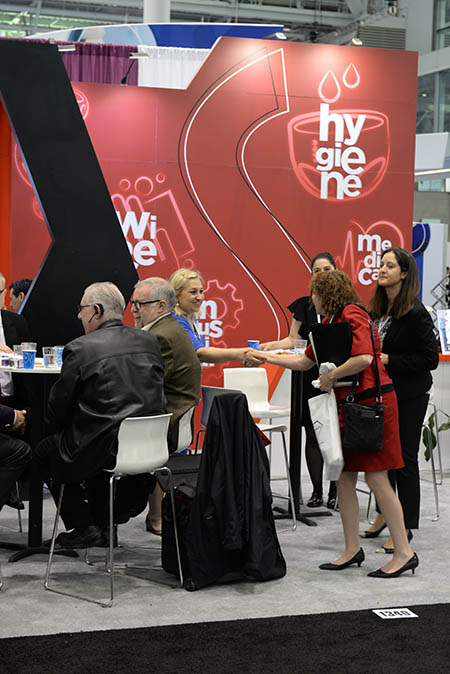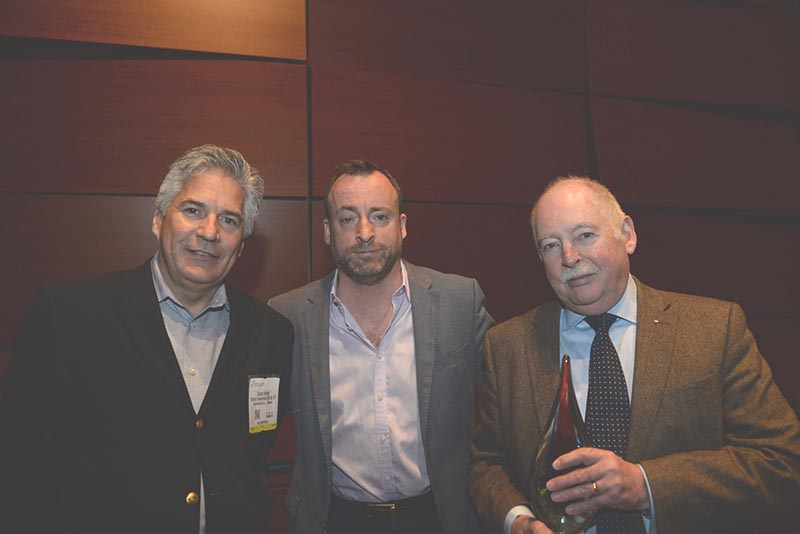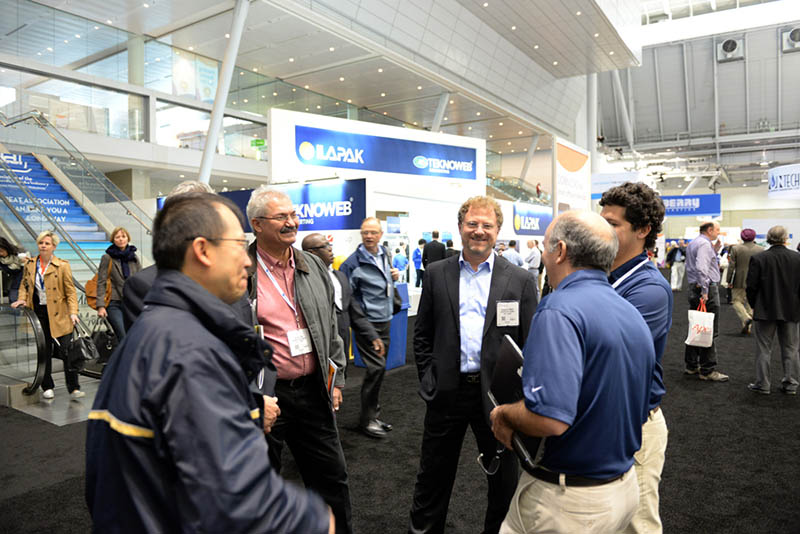IDEA16 broke all previous exhibitor and attendee records.
Attracting over 7,000 attendees and 555 exhibitors, INDA’s IDEA16, held in Boston from May 2-5, broke all previous exhibitor and attendee records and the buoyancy of the North American nonwovens industry was very apparent.
Yet on a global level, two factors continue to exert a strong influence – the progress of China and the price of oil.
Providing a macro-economic overview at the Global Nonwovens Summit held on the last day of the exhibition, David Katsnelson of RISI observed that until very recently, the emerging markets, led by China were driving global growth.
“That has now changed,” he said. “China is undergoing a much-needed transition and many other countries have been affected by it, while Brazil has experienced its worst slump in over a century. Added to this is the impact of the oil price, which collapsed at the end of 2014. There has been a decline in both supply and demand and nobody wants to cut production.”
Inventories
David Price, of Price-Hanna Consultants, added that there were great inventories of oil in place, with that of the U.S. at its highest level in ninety years.
“The idea in cutting the oil price was to keep fracking out of the business,” he said, “but while the number of projects has fallen, there have been tremendous increases in production as a result of new technologies, which are being adopted not just in the U.S., but also in China.”
“The U.S. is also benefitting from natural gas prices that are between two-to-three times lower than anywhere else in the world,” Katsnelson added. “This is a real competitive advantage and prices are expected to remain low.”
Nevertheless, Paul Cheng of ANFA, the Asian Nonwoven Fabrics Association, observed that around 30% of exhibitors at IDEA 16 were from China and that China’s nonwovens production has climbed from 1.3 million tons in 2008 to 2.9 million tons in 2015 – 72.4% of total production in Asia.
Investments

Brad Kalil, INDA’s director of market research and statistics, reported that of the 14 new North American nonwoven manufacturing lines announced during 2015 and 2016, nine would be located in North Carolina.
During the show, it was announced that a tenth line – as part of a completely new $31.6 million plant – will shortly be opened in the state by a Chinese JV called Uniquetex.
This is most significant, in that it will be the first to be based on advanced Chinese technology, as well as run by a Chinese company, in North America.
Uniquetex is a joint venture between Foshan Nanhai Beautiful Nonwoven, one of China’s largest nonwovens operations, and machine builder CL Enterprise (Wenzhou Chaolong Textile Machinery).
North Carolina’s Governor Pat McCrory and his team have been unstinting in attracting nonwovens companies to the region and it’s no coincidence that the state is home to both INDA and the Nonwovens Institute, the extremely effective research and development center.
“Textile manufacturing is one of North Carolina’s greatest traditional industries, and it is still growing,” said Governor McCrory, announcing the project earlier in May. “Our state is the ideal destination for globally-positioned, innovation-driven textile companies like Uniquetex.”
The spunmelt line that will be installed by Uniquetex will have an annual output of 6,000 tons and as the operation builds up, 150 people will be employed there.
Berry integration
Meanwhile, Berry Plastics – as the world’s largest nonwovens manufacturer following its acquisition of Avintiv – is currently conducting a search for the best North American location for a new state-of-the-art plant to add an incremental 16,000 tons of capacity for the domestic hygiene and healthcare markets.
John Neely, Berry’s global director of marketing and communications, said that the integration of Avintiv into the group was proceeding very well and had resulted in significant global scale for a company that was previously focused largely on the domestic North American markets.
“North America’s nonwovens industry is characterized by strong growth, confirmed capital investments and consolidations,” said INDA’s President Dave Rousse. “The investments that have been made have paid off, so will continue.”
INDA’s latest industry figures put North America’s nonwovens capacity in 2015 at 2.8 million tons – just behind China – and sales to the automotive industry are currently particularly strong. This is a result of both an increase in U.S. car manufacturing and in the average size of vehicles, but material substitution – with nonwovens replacing wovens, plastics and in some cases even metal parts – is also a contributory factor.
Innovation
There are also plenty of new developments along the nonwovens supply chain, as was perfectly illustrated by the IDEA 2016 Innovation Awards, with the winners in the five categories being:
· Best new equipment: ITW Dynatec’s Ultra Strand coating system
· Best new roll goods: Jacob Holm’s Softlite lightweight nonwovens
· Best new fiber/raw material: BASF’s Saviva SAP technology
· Best new disposable product: WipeMeWorld’s flushable wipes on a roll
· Best new durable product: Impossible Objects’ CBAM 3D printed pieces

Entrepreneurs
In addition, two companies, Turkish nonwovens producer Mogul and Singapore-based Mobi-Air, shared the Entrepreneur Award.
Mogul has just made machinery group Andritz Nonwovens very happy by ordering no less than three new manufacturing lines.
A neXline spunlace system will be installed at Mogul’s new plant in Luleburgaz in Turkey, designed for a wide variety of end uses, including automotive materials, artificial leather, wipes and roofing substrates. An Andritz Spunjet line will also be housed at the Luleburgaz plant and produce technical nonwovens from splittable bicomponent filaments.
A second complete spunlace line will be installed at the new Mogul plant in South Carolina, for the production of medical and hygiene materials.
Plant savings
Mobi-Air’s hybrid air filtration systems for manufacturing plants are compact enough to fit into a 20-foot shipping container and their modular, ‘plug and play’ design allows them to be relocated without being dismantled, or as is the case with most such systems, scrapped. Sister company Diaper Recycling Technology has also launched a highly effective recycling system for absorbent hygiene production lines.
With diaper conversion lines operating at speeds of up to 1,500 pieces a minute and a 2.1% average scrap rate, the DRT system – which is about the size of a domestic washing machine and can be directly connected – has the potential to prevent an awful lot of rejected product sent to landfill. It separates out the pulp, superabsorbent polymer and nonwovens into separate streams for 100% re-use.


